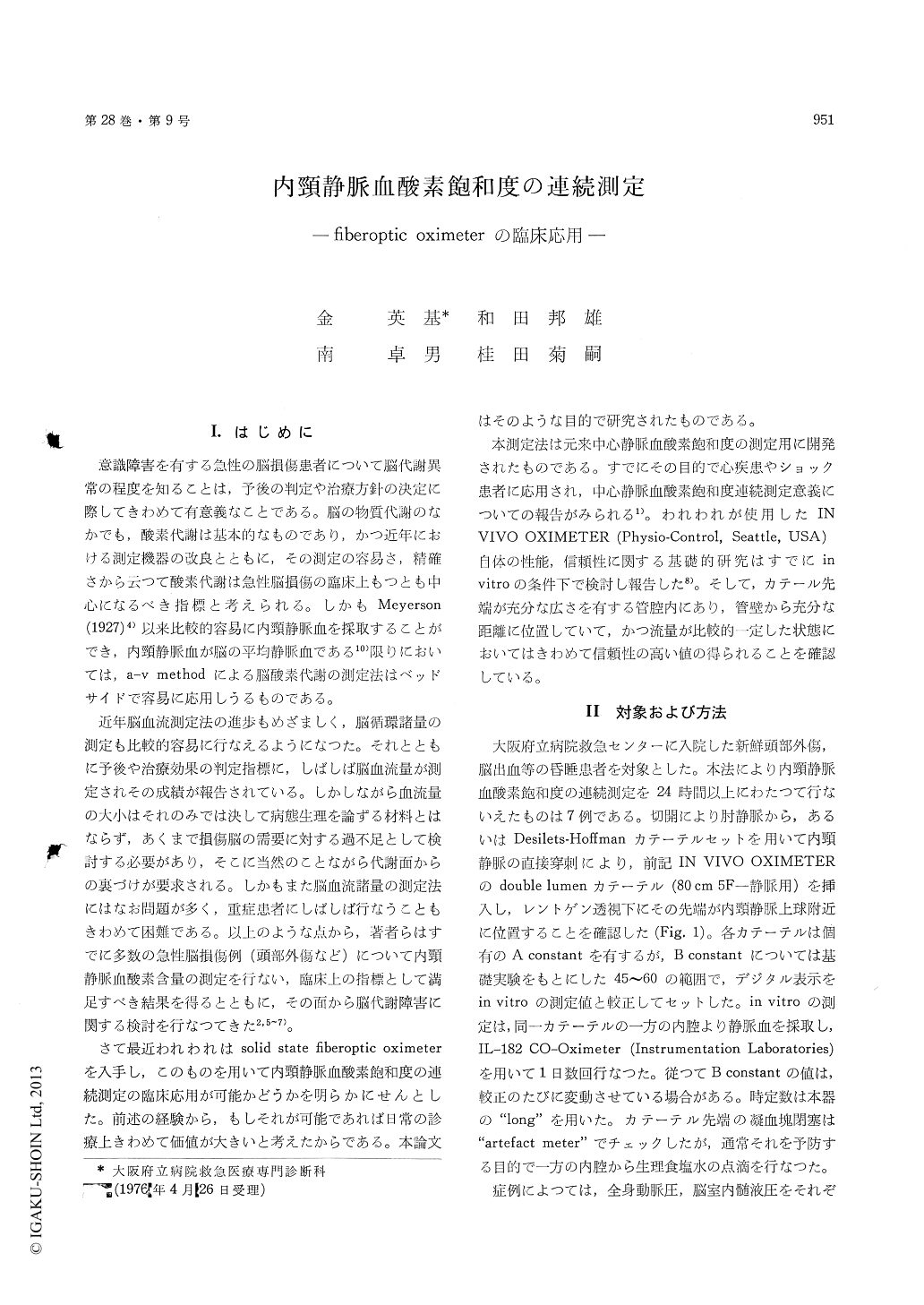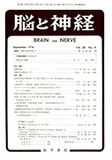Japanese
English
- 有料閲覧
- Abstract 文献概要
- 1ページ目 Look Inside
I.はじめに
意識障害を有する急性の脳損傷患者について脳代謝異常の程度を知ることは,予後の判定や治療方針の決定に際してきわめて有意義なことである。脳の物質代謝のなかでも,酸素代謝は基本的なものであり,かつ近年における測定機器の改良とともに,その測定の容易さ,精確さから云って酸素代謝は急性脳損傷の臨床上もっとも中心になるべき指標と考えられる。しかもMeyerson(1927)4)以来比較的容易に内頸静脈血を採取することができ,内頸静脈血が脳の平均静脈血である10)限りにおいては,a-v methodによる脳酸素代謝の測定法はベッドサイドで容易に応用しうるものである。
近年脳血流測定法の進歩もめざましく,脳循環諸量の測定も比較的容易に行なえるようになった。それとともに予後や治療効果の判定指標に,しばしば脳血流量が測定されその成績が報告されている。しかしながら血流量の大小はそれのみでは決して病態生理を論ずる材料とはならず,あくまで損傷脳の需要に対する過不足として検討する必要があり,そこに当然のことながら代謝面からの裏づけが要求される。しかもまた脳血流諸量の測定法にはなお問題が多く,重症患者にしばしば行なうこともきわめて困難である。以上のような点から,著者らはすでに多数の急性脳損傷例(頭部外傷など)について内頸静脈血酸素含量の測定を行ない,臨床上の指標として満足すべき結果を得るとともに,その面から脳代謝障害に関する検討を行なつてきた2,5〜7)。
Fiberoptic catheter oximeter instruments had been developed and already used clinically for continuous measurement of central venous SO2 (oxygen saturation). In this paper, an attempt was made for monitoring of SO2 of internal jugular venous blood (SjvO2).
As to the instrument-IN VIVO OXIMETER (Physio-Control, Seattle, USA), the capability and reliability of measuring SO2 were discussed else-where following some in vitro experiments. Thepresent study was designed to clarify the possibility and the significance of its clinical application for Sjv02 measurement.
The tip of fiberoptic catheter was placed at superior jugular bulb on the patients suffering from recent intracranial hemorrhage. Calibration was made several times a day by in vito measurement of SO2 using CO-Oximeter. The monitoring of SjvO2 was continued for over than 24 hours.
The instrument worked satisfactorily in a limited number of patients. And as a results, the reliable SO2 curve was obtained besides some technical troubles, which concerned with the insertion technic of a catheter and catheter tip artifacts. One of the common artifacts was caused by clot formation at the catheter tip and the other by impinging of tip on the vessel wall. The last might be a flow arti-fact which resulted in small fluctuation of unknown origin in SO2 curve. Despite these limitations, the clinical experiences warranted the use of a fiber-optic in vivo oximeter for continuous monitoring of cerebral metabolism in selective comatose patients.
It should be stressed that the new technic could detect the rapid changes of cerebral metabolism following anoxic episodes or acute cardiac failure. And it was proved in this study that the continuous measurement of SjvO2 provided the more rapid and reliable prognostic signs than intracranial pres-sure or other clinical parameters. The phenomenon of internal jugular hyperoxia in critically ill patients, which was reconfirmed in the present study, had been reported and discussed in the previous paper.

Copyright © 1976, Igaku-Shoin Ltd. All rights reserved.


